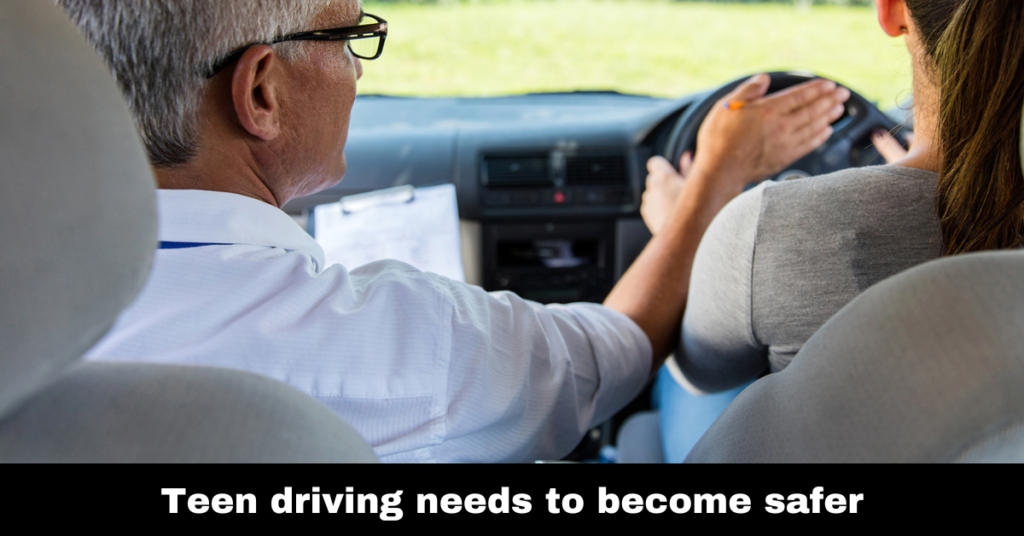If it is an exciting rite for adults to get a driving license, it can trigger a parent to be terrifying — for good reason. Teenagers are particularly reckless in their first years of driving. Motor vehicle crashes have been the leading cause of death among young people between 15 and 20. Research shows that over half of those who die during crashes are passengers who most do not wear a seatbelt. Immaturity and a lack of experience contribute to high crash rates among young people. Also, the best teens don’t have experienced judgment. This impacts their knowledge of unsafe conditions and contributes to risky activities such as speeding and tailgating. Teens tend to be at risk, smoking, talking on mobile phones, SMS, talking to car mates, and sometimes they don’t wear seat-belts. Take the following steps to ensure the safety of your teenager as you become a parent of new drivers.
Register your child in a training course for drivers
The more driving the best; the more confidence your teenage girls have behind the wheel and the more they can respond to difficult road situations. In addition, insurers treat a teenager who has learned to drive a renowned driver training course more favorably and can gain a discount.
- Register your teen with a secure driver
Check if you have a “good driver” policy in your insurance company. Teenagers in these programs are signing parent/teen driving contracts detailing the obligations of the new driver (for example, not getting teenagers in the car, getting a certain hour at home, etc.) and how such standards are not met. If your teens finish the program, you will also be eligible for a discount, as well as being a more safe driver. Furthermore, several insurance providers are helping minimize the number of teenage incidents by subsidizing the costs of electronic devices such as GPS systems and video cameras, which can track the way teens drive and notify the parents by email, text message, or telephone of risky driving habits.
- Choose a safe car
Your teenager and you can pick a car that is easy to drive and protects against a crash. Learn how to pick a safe car — for example, avoid small and high-performance cars that can improve speed and recklessness, or trucks or SUVs, which are more likely to roll over.
- Enroll your teen in a licensing program for a graduate driver or build yourself
Many countries have successfully lowered youth accident rates with GDL and other laws that allow adolescents to learn skills and experience behind-the-wheel. This limits the ability of new drivers to do such work – such as late-night travel, car driving, unregulated travel – until they are licensed for a time. Parents will enforce the same policies in countries without a GDL program. Take an active role in the driving practice of your adolescents and expose them to driving under a wide range of driving conditions so that they develop their knowledge and trust. Permit independent driving, including night driving and driving in extreme weather, only after continued practice.
- Know the risks of driving distracted and disabled
Discuss the importance of not driving while being distracted by your teenagers. Distance involves telephoning or text throughout driving, radio, and chatting with friends in the car. Teens in the vehicles of their peers should also be accountable passengers. New drivers are forced to wait 1,000 miles or six months for their first teenage passenger.
- Discuss opioid and alcohol risks
Advise young people to never drink or to take medications and not to go in a vehicle if the driver has taken medication or alcohol. Please advise your teen to call you if a circumstance like this happens to make sure he/she is safe.
- Be a role model
New drivers learn by example, so your adolescent driver will mimic you if you drive carelessly. Wear the seatbelt all the time and never drink or drive. And last but not least, teens mature differently — not every single person is sufficiently mature to hold a driver’s license at the same age. Before parents are permitted, they should consider whether teenagers are easily distracted, anxious, or dangerous.
Conclusion:
Government and education systems are not the only parties to safe teenage driving, safe practices need to be defined by parents. Parents should lead by example and abide by the rules of the road, especially if they are in the vehicle with their young people. Parents have to set their own rules and consequences, above and above the laws of the state. The National Administration of Highway Traffic Safety recommends that parents enter into a teenager contract, which would contain punishments for violating any law.

